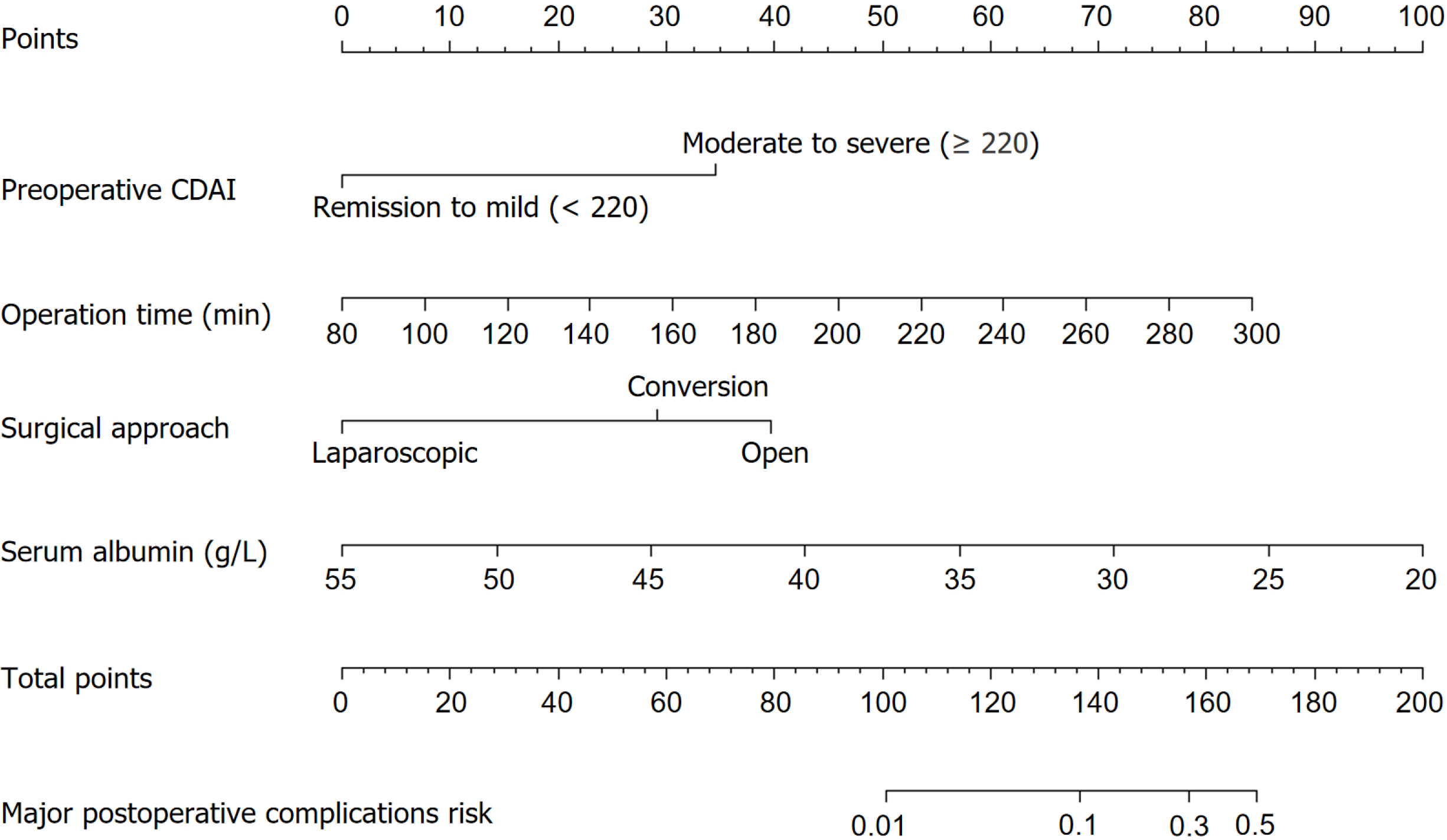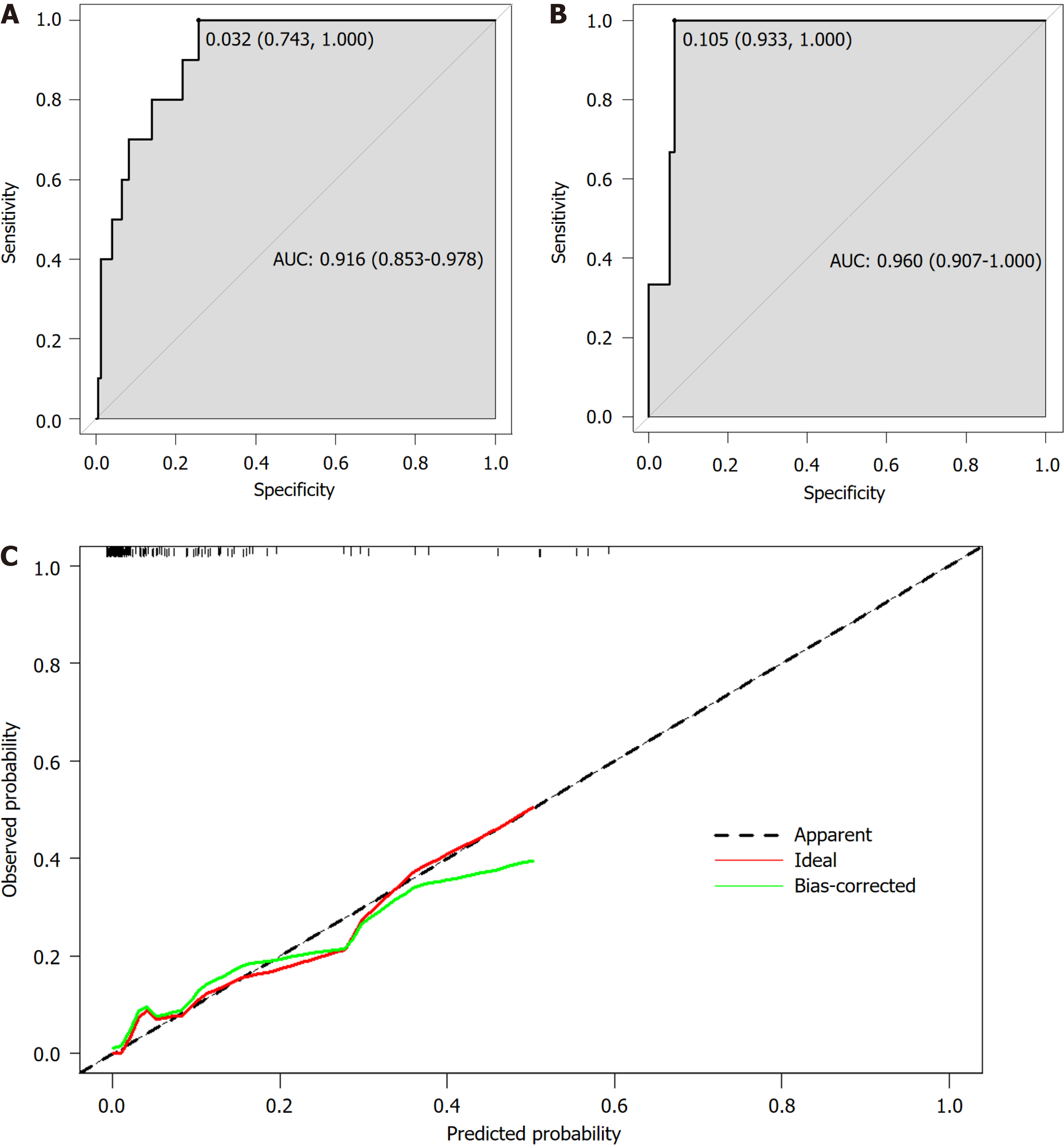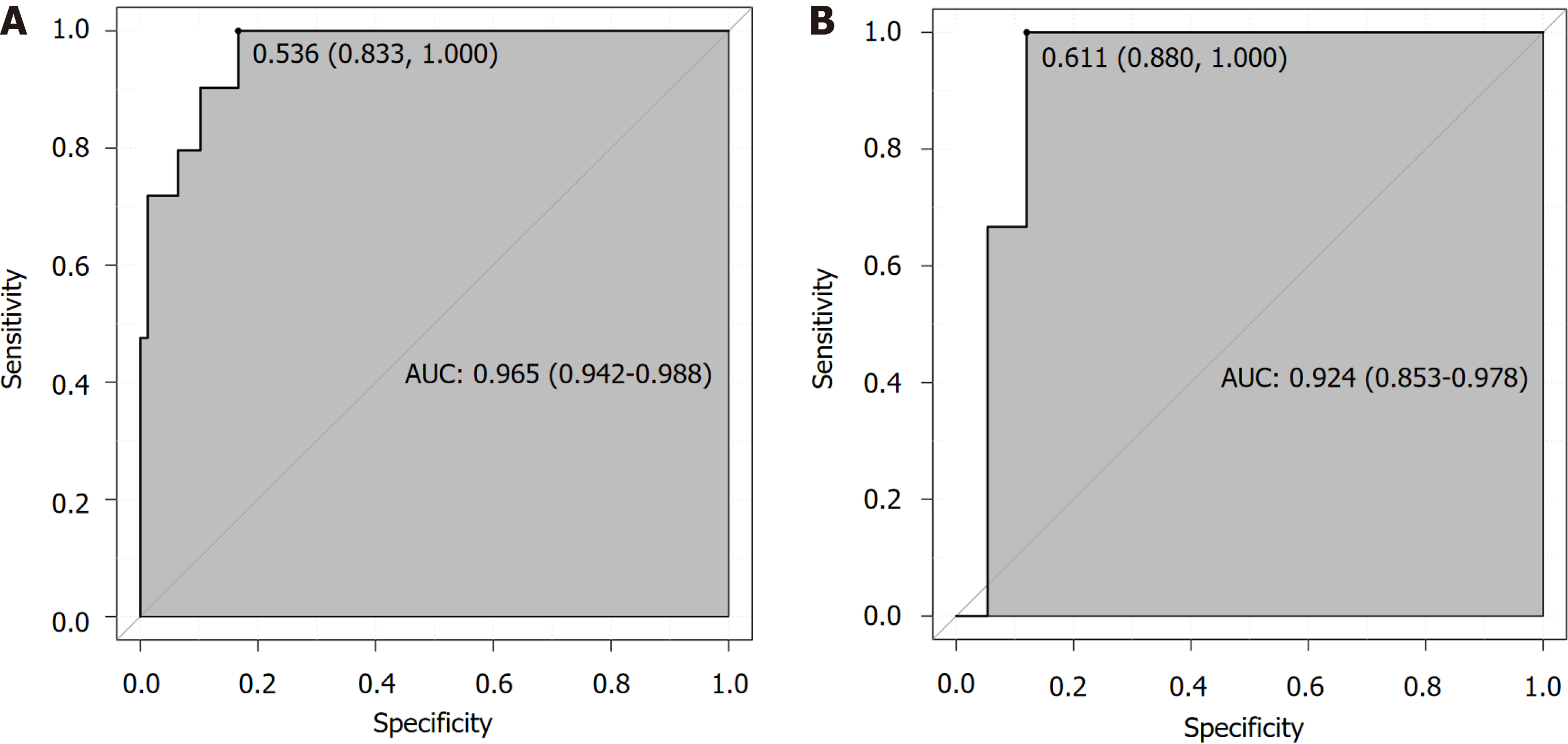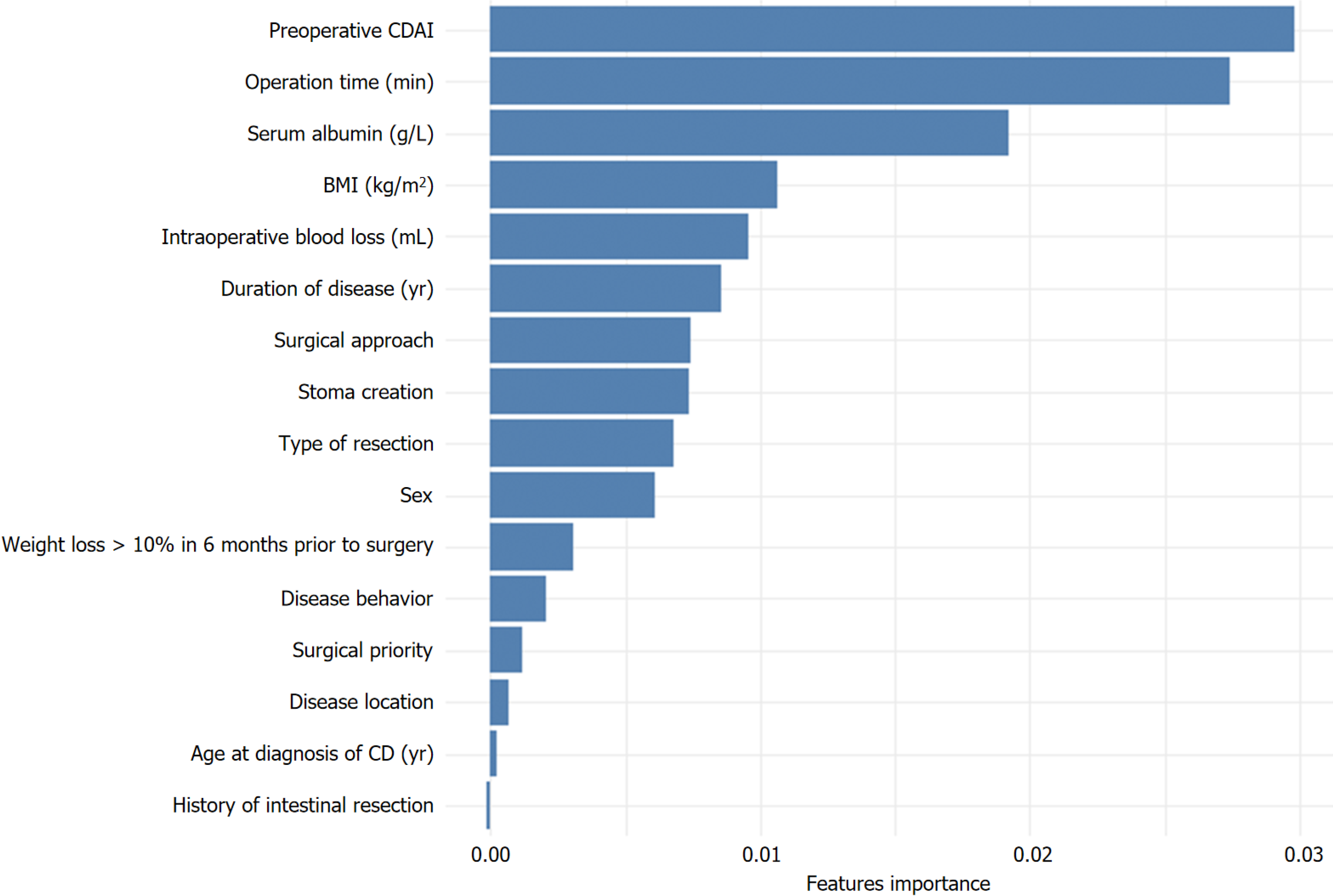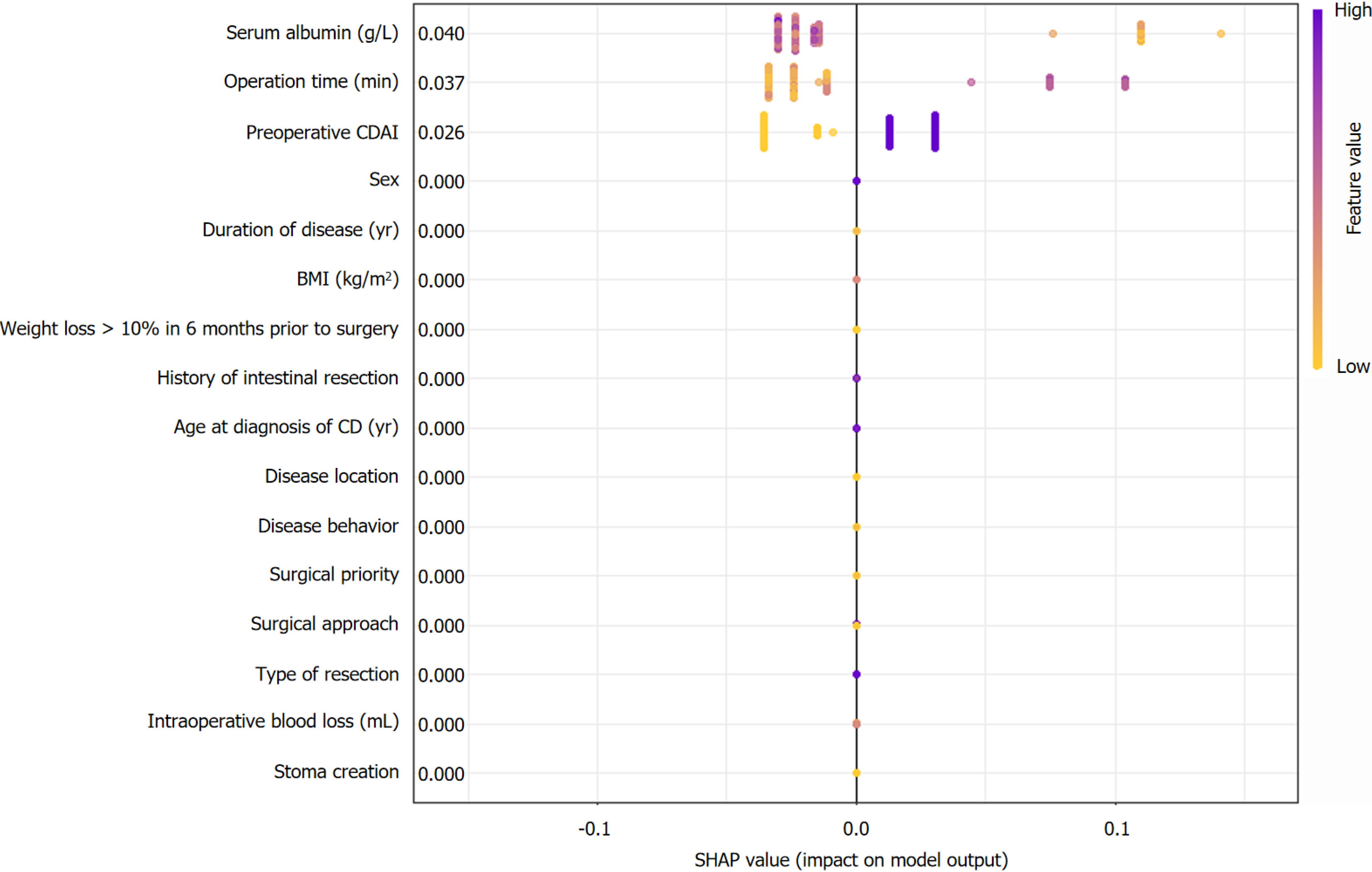Copyright
©The Author(s) 2024.
World J Gastrointest Surg. Mar 27, 2024; 16(3): 717-730
Published online Mar 27, 2024. doi: 10.4240/wjgs.v16.i3.717
Published online Mar 27, 2024. doi: 10.4240/wjgs.v16.i3.717
Figure 1 Nomogram construction.
The possibility of major postoperative complications was estimated by summing the scores corresponding to each risk factor. CDAI: Crohn’s disease activity index.
Figure 2 Evaluation of the nomogram predictive performance.
A-C: Receiver operating characteristic (ROC) curves of the nomogram for predicting the probability of postoperative complications in the training cohort (A) and the validation cohort (B). The area under ROC curve of the training cohort and the validation cohort reached 0.916 and 0.960, respectively, indicating the high predictive value of the model. The calibration curve of the nomogram is close to the front diagonal, indicating that the nomogram had good prediction performance (C). AUC: Area under the curve.
Figure 3 Performance of random forest model.
A: The receiver operating characteristic curves (ROC) of the random forest (RF) model in the training cohort; B: The ROC of the RF model in the validation cohort. AUC: Area under the curve.
Figure 4 Feature importance ranking of the random forest model.
CDAI: Crohn’s disease activity index; BMI: Body mass index; CD: Crohn’s disease.
Figure 5 SHapley Additive exPlanations summary plots of the random forest model.
The y-coordinate of each point is determined by the feature it represents, while the x-coordinate is determined by its impact on the model’s output. The color of each point indicates its value from high to low, according to the color bar on the right. The features on the y-axis are ordered by their importance. CDAI: Crohn’s disease activity index; BMI: Body mass index; CD: Crohn’s disease; SHAP: SHapley Additive exPlanations.
- Citation: Wang FT, Lin Y, Yuan XQ, Gao RY, Wu XC, Xu WW, Wu TQ, Xia K, Jiao YR, Yin L, Chen CQ. Predicting short-term major postoperative complications in intestinal resection for Crohn’s disease: A machine learning-based study. World J Gastrointest Surg 2024; 16(3): 717-730
- URL: https://www.wjgnet.com/1948-9366/full/v16/i3/717.htm
- DOI: https://dx.doi.org/10.4240/wjgs.v16.i3.717









